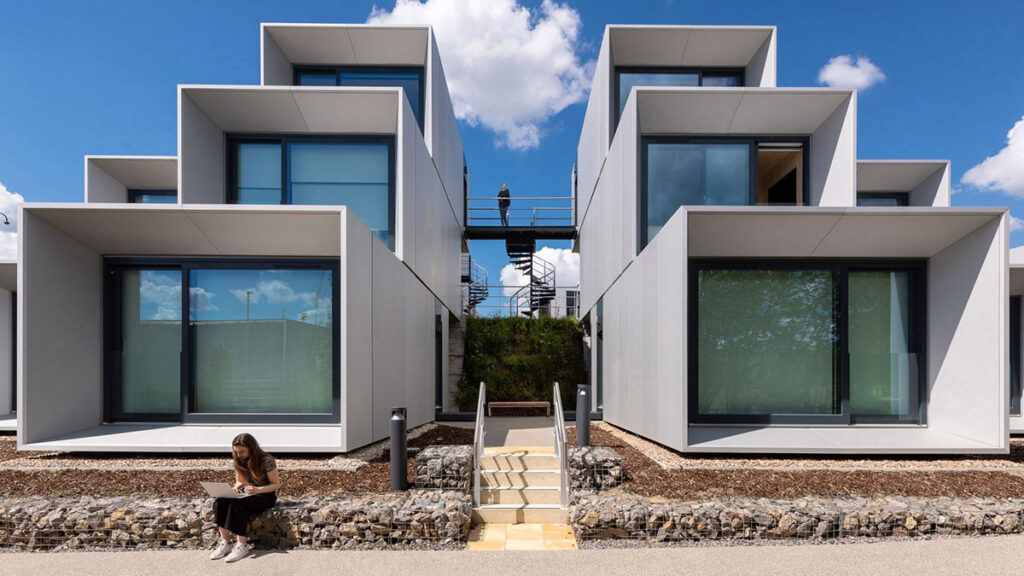
Materials used in modular building: A Guide for Home Enthusiasts
In the ever-evolving world of construction, the concept of modular buildings is gaining significant momentum. Central to this innovation are the materials used in modular building, which play a crucial role in determining the structure’s durability, aesthetics, and sustainability. As home enthusiasts look towards modern and efficient building solutions, understanding these materials becomes essential.

The Rise of Modular Building
Modular building is a construction method where structures are built off-site in a factory setting and then assembled on-site. This approach offers numerous advantages, including reduced construction time, minimized waste, and enhanced quality control. The choice of materials is pivotal in ensuring these benefits are fully realized.
Primary Materials Used in Modular Construction
Steel
Steel is a popular choice due to its strength and durability. It provides a robust framework for modular buildings and is resistant to pests and fire. The use of steel also allows for flexibility in design, accommodating various architectural styles.
Wood
Wood is another commonly used material, appreciated for its natural aesthetic and insulation properties. It is lightweight, making transportation easier, and can be sourced sustainably, enhancing the environmental profile of modular buildings.
Concrete
Concrete provides excellent thermal mass and durability. It is often used in the foundations and floors of modular structures. Advances in concrete technology have led to the development of precast panels, which are particularly beneficial in modular construction.
Innovative Materials in Modular Building
Cross-Laminated Timber (CLT)
Cross-Laminated Timber (CLT) is gaining popularity for its sustainability and strength. It is a type of engineered wood that provides excellent structural performance and is used in both residential and commercial modular buildings.
SIP Panels
Structural Insulated Panels (SIP) are used for walls, floors, and roofs in modular construction. They offer superior insulation and are known for their energy efficiency, contributing to the building’s overall sustainability.
Environmental Impact and Sustainability
One of the key advantages of modular buildings is their potential for sustainability. By using materials like recycled steel, sustainably sourced wood, and eco-friendly insulation, modular buildings can significantly reduce their environmental footprint. This aligns with the growing demand for green building practices.
Recycled and Reclaimed Materials
The use of recycled and reclaimed materials is becoming increasingly common in modular construction. These materials not only reduce waste but also add unique character to the design. For example, reclaimed wood can provide a rustic charm, while recycled metal can be used for modern, industrial aesthetics.
Cost-Effectiveness of Modular Materials
While the initial cost of some modular materials might be higher, the overall cost-effectiveness becomes apparent through reduced construction time and lower labor costs. Additionally, the energy efficiency of materials like SIPs can lead to significant savings over the building’s lifespan.
Challenges in Material Selection
Choosing the right materials for modular building is not without challenges. Factors such as local building codes, climate, and availability can influence material selection. It is essential to work with experienced architects and builders to navigate these complexities effectively.
Applications of Modular Buildings
Modular buildings are versatile and can be used for various applications, from residential homes to commercial spaces and educational facilities. Their adaptability makes them an attractive option for many different sectors.
Residential Homes
For home enthusiasts, modular homes offer the opportunity to customize designs and layouts, ensuring that personal style and functional needs are met. The use of innovative materials allows for unique and personalized home environments.
Commercial Spaces
In commercial settings, modular buildings provide quick and efficient solutions for office spaces, retail shops, and more. The durability of materials like steel and concrete ensures that these structures can withstand heavy use.
The Future of Modular Building Materials
As technology advances, so too does the potential for new materials in modular construction. Innovations such as 3D-printed materials and smart building products are on the horizon, promising even more efficiency and sustainability.
For an in-depth exploration of this topic, visit What is Modular Construction?, an excellent resource for understanding the intricacies of this building method.
Conclusion
The materials used in modular building are fundamental to its success. By selecting the right materials, builders can create structures that are not only efficient and cost-effective but also sustainable and aesthetically pleasing. As the industry continues to evolve, the possibilities for modular building are boundless, offering exciting opportunities for home enthusiasts and builders alike.

FAQ Section
What are the main benefits of using modular building materials?
Modular building materials offer benefits such as reduced construction time, enhanced quality control, and sustainability. They also provide flexibility in design and cost savings over the building’s lifespan.
How do modular materials contribute to sustainability?
By using materials like recycled steel and sustainably sourced wood, modular buildings reduce waste and minimize their environmental footprint. Energy-efficient materials further contribute to sustainability.
Can modular buildings be customized?
Yes, one of the key advantages of modular buildings is their adaptability. Home enthusiasts can customize designs and layouts to suit their personal style and functional needs.
Learn more about the cultural perceptions of modular homes by visiting Cultural Perceptions of Modular Homes.
This article contains affiliate links. We may earn a commission at no extra cost to you.